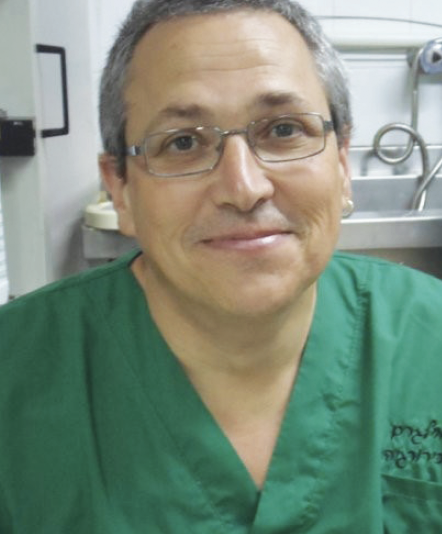UCD Research - January 2020
Laparoscopic and laparoscopic-assisted procedures in dogs, a systematic review of perioperative complications
In association with

The benefits of minimally invasive laparoscopic techniques over conventional open techniques are numerous and include diagnostic accuracy, decreased postoperative pain, rapid patient recovery, potential reduced risk of infection and improved cosmesis.1-3
The utility of laparoscopic and laparoscopic-assisted techniques is becoming increasingly commonplace in small animal surgery. This is reflected in the rise in publications pertaining to laparoscopic procedures in the past decade. With experience advancing in these techniques, publications describing more challenging procedures have emerged, including laparoscopic cholecystectomy and adrenalectomy in dogs first published in 2008.4-6 On the basis of the surge in the number of laparoscopic publications in the past 10 years and emergence of new surgical procedures with greater surgeon experience, there is a need for an updated review to investigate and further document the types of perioperative complications associated with laparoscopic and laparoscopic-assisted procedures in dogs. The objective of this research led by Dr Maurin will be to systematically review and evaluate the scientific literature reporting the perioperative complications of laparoscopic and laparoscopic-assisted procedures in dogs for the last 10 years.

Ronan Mullins

Marie Pauline Maurin, DVM
Association between indwelling urinary catheter tip isolates and those obtained by cystocentesis in a population of dogs with indwelling urinary catheters: a single institutional prospective study
Bacterial urinary tract disease is a common cause of morbidity in dogs and among the leading reasons for antimicrobial use. Improper therapy can lead to a variety of health concerns for the dog (e.g. failure to resolve infection, development of antimicrobial resistance), economic (eg. need for repeated or prolonged treatment), public health (eg. antimicrobial resistance) and regulatory (eg. antimicrobial use) concerns. A variety of methods have been described in order to diagnose a urinary tract infection with the bacterial culture and sensitivity testing of urine samples obtained via cystocentesis being one of the most accurate and frequently used methods in everyday clinical practice.1
Urethral catheterisation is a commonly performed procedure in veterinary medicine and a critical component of the management of many surgical patients that remain recumbent for prolonged periods of time, undergo surgery of the urinary tract or necessitate monitoring of the urinary output. However, as a urethral catheter acts as a direct communication between the external environment and the bladder and offers a biomaterial surface for formation of biofilms, catheterisation is associated with an inherent risk of bacteriuria or bacterial cystitis. The prevalence of bacteriuria in catheterised dogs and cats is high (10-55%); however, it is important to differentiate cystitis from subclinical bacteriuria as the later rarely requires antibiotic treatment.1 This emphasises the importance of monitoring and accurate diagnosis of urinary tract infections in hospitalised small animal patients.
The objectives of this research, led by Dr Mullins, are to assess the association between (1) indwelling urinary catheter tip isolates and isolates obtained from the bladder by cystocentesis and (2) positive urinary catheter tip culture results and clinical cystitis in a cohort of surgical patients hospitalised with indwelling urinary catheters. This will be a prospective study wherein urine samples will be obtained via cystocentesis at three different time points pre- and post-catheterisation. Bacterial isolates obtained by cystocentesis at these time points will be compared with isolates obtained from the urinary catheter tip.
References available on request.

Ronan Mullins

Michail Vagias
Elbow dysplasia: investigating new treatment options
Elbow dysplasia (ED) is a common condition of domestic canids, with a reported prevalence of 17% in Labrador retrievers in the UK, and 70% of Bernese mountain dogs in the Netherlands.1,2 ED can occur in any breed of dog, and is typically a condition of large and giant breed dogs, however, it has been reported in small and toy breed dogs. Recent reports suggest that the Labrador retriever, Rottweiler, German Shepherd dog, and Staffordshire Bull Terrier are at increased risk for development of ED. ED is generally a bilateral disease, most commonly present at a young age. Look out for signs of persistent unilateral forelimb lameness, which may be refractory to conservative management. Subsets of the diseased population present later in life due to progression of degenerative joint disease associated with this condition.
The definition of ED by the International Elbow Working Group (IEWG) in 1993 has been broadly accepted and describes the components included in the disease. The components are medial coronoid process fissure/fragmentation, osteochondrosis of the humerus, ununited anconeal process, and incongruity of the elbow joint. Patients suffering one, some, or all components can be described as suffering from elbow dysplasia.3
Many aetiopathogeneses for ED have been proposed, including humeroulnar incongruity, radioulnar length mismatch, biceps/brachialis mismatch, radioulnar incisure incongruity, joint incongruity, osteochondrosis and genetic causes.3-6 At present, evidence for many of the proposed mechanisms is lacking, but what has become apparent is that multiple permutations of disease are likely to exist, and a simplistic or singular approach to identifying ‘the’ underlying aetiopathogenesis of elbow dysplasia is unlikely to succeed.
We believe that the location of the pathology in a subset of cases implicates the proximal radioulnar joint. For this reason, we chose to focus on the canine antebrachium, and to identify relationships between the radius and ulna. We are specifically interested in the rotational and translational movement of the radial head relative to the medial coronoid process of the ulna during ambulation.
It has been experimentally demonstrated that there is internal rotation of the radius with extension of the carpus and that this movement is likely due to the conformation of the opposing joint surfaces of the antebrachiocarpal joint.7 It has also been shown that the internal rotation of the radius that occurs when the carpal joint is extended is antagonised by the interosseus ligament which causes outward rotation of the radius when the carpus is flexed. Cutting the interosseous ligament results in a significant decrease in the rotation of the radius during flexion and extension of the carpus.
Study design
This research is a collaboration between the UCD School of Veterinary Medicine, UCD School of Mechanical and Materials Engineering, and Koret School of Veterinary Medicine. Stephen Martin, Professor Barbara Kirby, and Professor Joshua Milgram are in the testing phase of a biomechanical research project using cadaveric canine specimens. Specimens are mounted and subjected to physiologic forces under a range of surgical, and non-surgical manipulations, in a bid to identify surgical and non-surgical extra-articular interventions which may alleviate or slow progression of dysplastic elbow disease in affected dogs. It is considered that this research study represents the first step in development of an alternative treatment option for dogs suffering from elbow dysplasia, and more specifically medial compartment disease.
References available on request.

Stephen Martin

Barbara Kirby
















